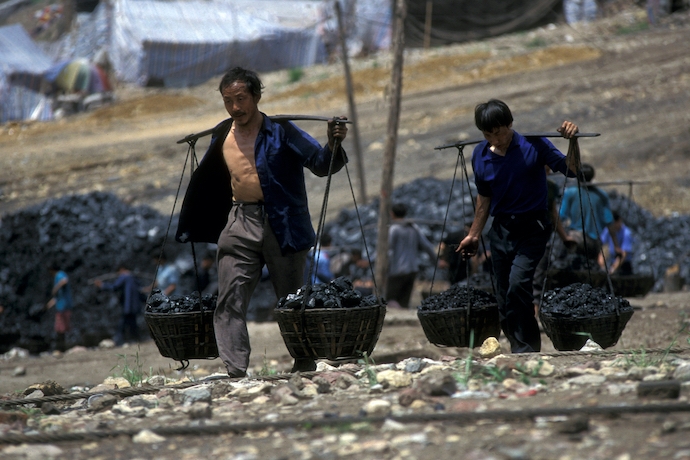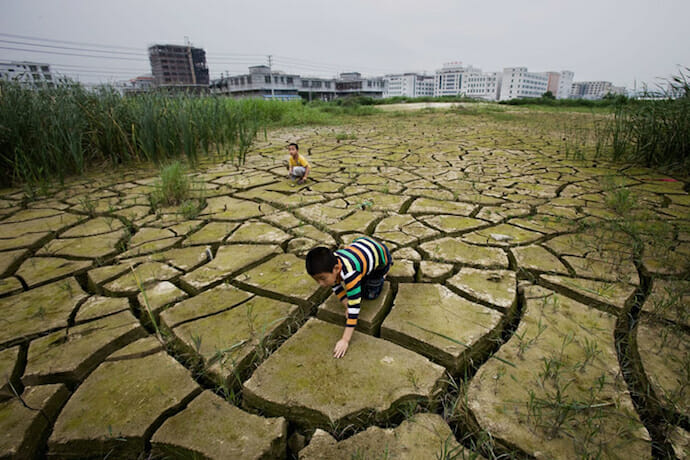The Platform
Latest Articles
by Kanan Heydarov
by Khalid Cherkaoui Semmouni
by Rasel Hossen Shakib
by Gordon Feller
by Collins Chong Yew Keat
by James Carlini
by Pitamber Kaushik
by Theo Casablanca
by Ikram Ali
by Eva Kneifel
by Kanan Heydarov
by Khalid Cherkaoui Semmouni
by Rasel Hossen Shakib
by Gordon Feller
by Collins Chong Yew Keat
by James Carlini
by Pitamber Kaushik
by Theo Casablanca
by Ikram Ali
by Eva Kneifel
Blaming China for Climate Change is Counterproductive
From Oct. 31 to Nov. 21, world leaders met at the 2021 United Nations Climate Change Conference (COP26) to discuss joint climate change policy for the first time since the 2015 Paris Agreement. Most notably, China and the U.S. released an announcement, agreeing to cooperate on the reduction of greenhouse gas emissions.
Although U.S.-China cooperation is absolutely vital to combating climate change, this latest agreement is a rare occurrence, representing a rare blip rather than a long-term trend. Nearly nobody believed that the two countries would be able to come to a deal–even after the announcement, news outlets like the Wall Street Journal characterized it as a “surprise.”
Americans have become accustomed to constant conflict with China. The media is flooded with depictions that associate China with disease, human rights violations, and debt-trapping. To much of America, the sustained good relations that are so necessary to form meaningful climate agreements are an impossibility, something never to be considered. In a March Gallup poll, nine out of ten Americans expressed that they viewed China as a competitor or enemy, with over half believing that the U.S. should seek to limit China’s power.
This deep distrust of China has seeped into climate policy, inevitably so. Believing a country to be an inherently evil actor, and an enemy, damages the trust and credibility needed for any meaningful negotiation.
American rhetoric on climate change has reflected the government and the public’s negative attitude towards China. Instead of emphasizing collaboration and trust on climate issues, American politicians and media have focused on offloading responsibility and blame onto the Chinese.
Even at the summit, Biden blamed China for a lack of progress. “China basically didn’t show up in terms of any commitments to deal with climate change,” he said. “There’s a reason why people should be disappointed in that. I found it disappointing myself.”

Biden is wrong. China’s leaders have been committed to the fight against climate change, with President Xi Jinping promising that the country will reach carbon neutrality by 2060.
These promises have been followed up with concrete shifts; China has cut coal usage from 70 percent of its total energy consumption in 2009 to around 57 percent in 2020. And, according to Scientific American, they have promised to end coal financing abroad as well.
Even despite challenges in meeting these goals, China’s progress cannot be taken lightly. For an economy so incredibly tied to fossil fuels, shifting fully away from coal without leaving people freezing or hungry during challenges is walking a dangerous tightrope.
Biden’s comments are not just comments–they are also a verbal reflection of the hyperfocus on China in climate discussions. Many defenders have backed Biden’s approach, arguing that China is the world’s largest emitter of carbon dioxide, emitting over a quarter of the world’s greenhouse gas emissions.
Though the fact that China emits the most carbon dioxide is indisputable, focusing so heavily on this one number ignores the larger, more accurate picture.
Saying that China is the world’s bigger polluter only looks at net emissions, not per capita emissions. Looking at both numbers is important because per capita data accounts for a larger population size–which logically should require more energy.
When looking at this data, China is far from the biggest climate change culprit. Instead, data from the Global Carbon Project shows that China comes in 48th place, with only half the per capita emissions of the United States. In other words, the average American has a carbon footprint twice as large as an average Chinese person.

Only examining numbers also ignores the wider historical context. Most of the world’s other top emitters have been fully industrialized countries for centuries now. As a result, DW finds that China’s historical emissions, the amount of CO2 emitted since 1750, is barely half of the United States’.
It is unfair to compare the capacity of an economy that has industrialized for centuries, to one that has just experienced an economic boom in recent decades. By the late 20th and early 21st century, when China integrated into the global capitalist system, the emissions-reliant development model had already been established.
“There was already a problem before China came along,” explains research from the Center for International Climate Research. “So, effectively, China did not create the problem.”
Narratives that blame China for failing to solve the climate problems we face today ignore the three centuries in which countries like the United Kingdom and the United States built their economies off massively polluting industries–a pattern which they are continuing to follow.
Especially today, emissions in China have benefited consumers in the West. Western countries have outsourced their pollution by mass-consuming products made in carbon-intensive factories, such as machinery, clothing, and electronics.
Although the root of the problem lies in Western overconsumption, the emissions show up under China’s data. In other words, Western countries are outsourcing their pollution–benefiting from the products produced through pollution, while escaping the blame.
Pushing the culpability for today’s pressing issue of global warming onto China will do nothing to aid the people already suffering from increased natural disasters and air pollution. However, China is still critical in the fight against climate change. If it continues emitting at its current rate, meeting the goals outlined at the Paris summit in 2015 will become entirely impossible. But the United States has a more or less equal responsibility: our country cannot continue on its current trajectory either.
A truly holistic approach to climate change will have to focus entirely on cooperation, and abandon the “blame game” that has dominated international climate summits for so long. As the UCLA Law Review explains, emissions limits adopted in just one country create a phenomenon of international emissions leakage. In this scenario, instead of creating net lower emissions, polluting industries will simply relocate from regulated to unregulated countries.
The danger, according to the same UCLA Law Review study, is that “over time, leakage will also render the economy of the recipient of the leaking industry even more carbon-intensive, as high-emitting industry relocates there.”
Shifting blame and responsibility means that emissions will only shift from country to country, and never truly be eliminated. The solutions are already laid out: we must engage China, meaningfully and respectfully.
Currently attending school in Washington, D.C., Irene Zhao mostly writes content exploring the global impact of foreign policy. Outside of writing, Irene competes on her school's debate team and enjoys reading about world affairs.
